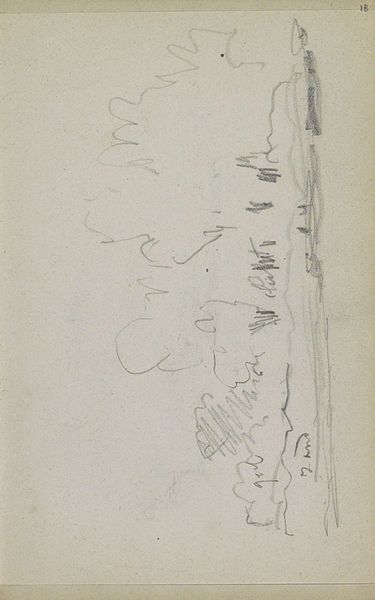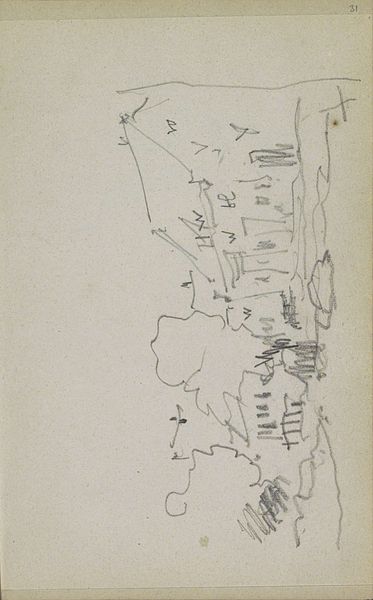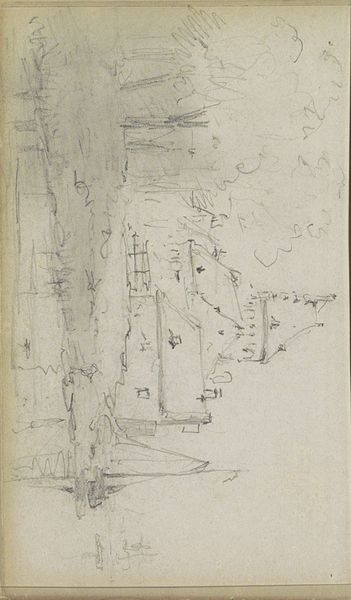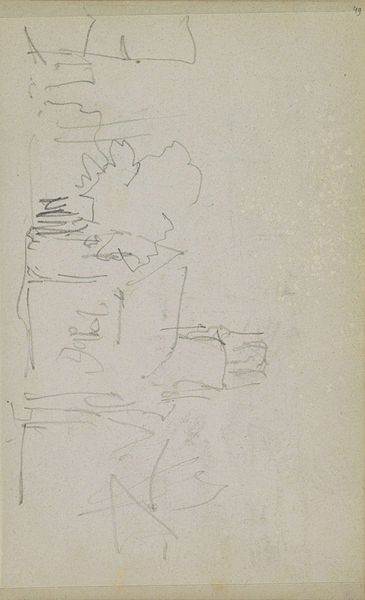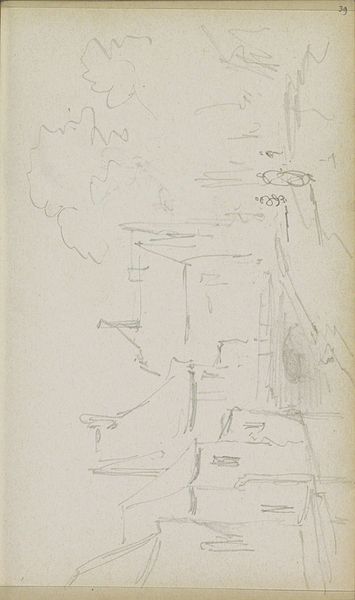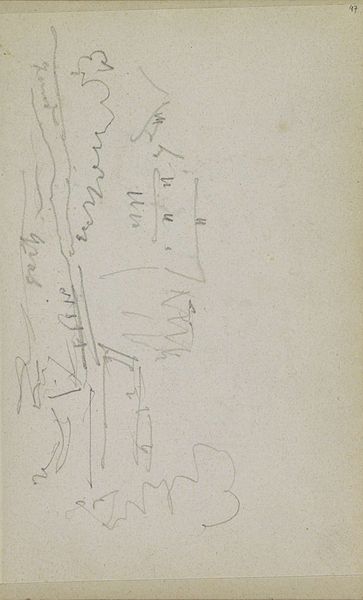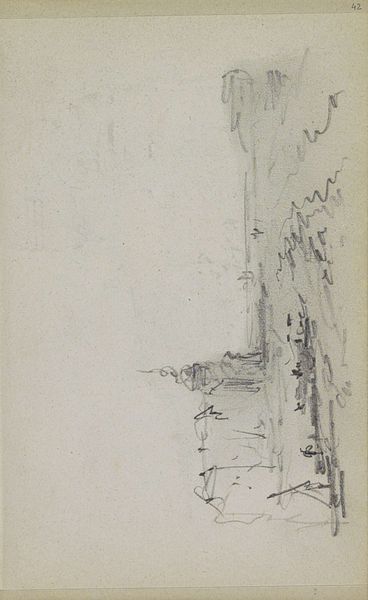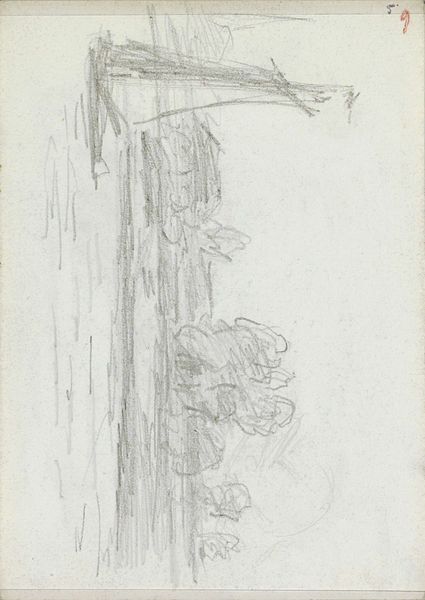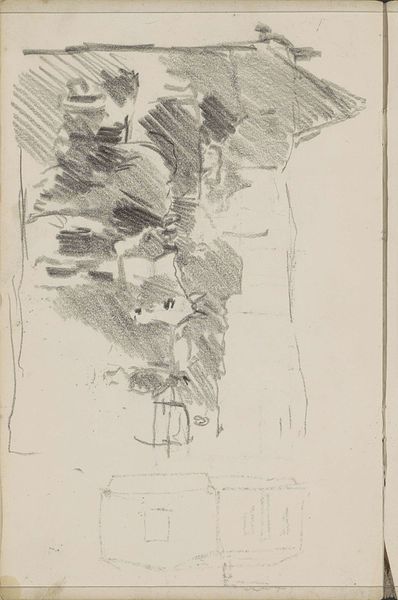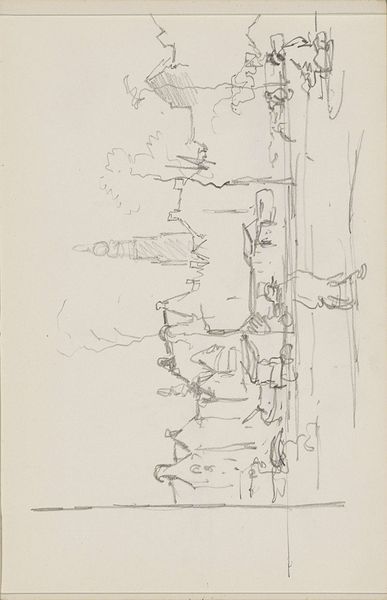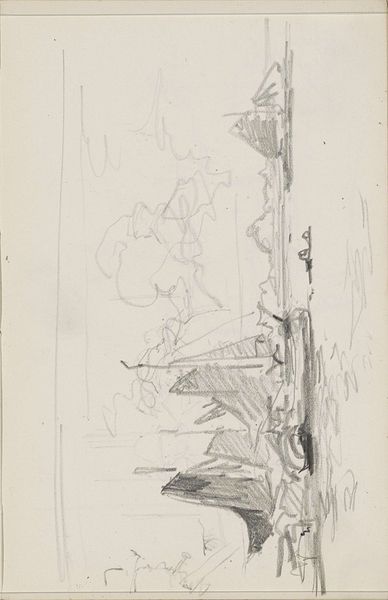
drawing, pencil
#
drawing
#
impressionism
#
pencil sketch
#
landscape
#
pencil
Copyright: Rijks Museum: Open Domain
Editor: So, here we have Adrianus Eversen’s pencil drawing, "Drie bomen op een heuvel", likely made somewhere between 1828 and 1897. It's quite faint and unfinished, almost ghostly in its simplicity. What strikes you most about this piece? Curator: The raw quality is precisely what grabs me. It invites us to consider the relationship between landscape, representation, and the artist's hand. How can a quick sketch point to the larger context of land ownership, access, and perhaps even erasure in landscape art traditions? Editor: Erasure? That’s an interesting angle, how so? Curator: Think about the power dynamics inherent in depicting land, in “capturing” nature. Who has the right to represent it, and whose stories are left out? The sparseness here allows for an openness, where viewers are more apt to question than to consume. Editor: I hadn't considered the political implications of landscape art itself, I was mostly focusing on just the image, it feels so unassuming... Curator: Exactly. But that unassuming quality can be deceptive. Doesn't this image remind you of the way land is surveyed, plotted, controlled? Consider also the period; the rapid industrialization, urbanization and land transformation. Editor: I see what you mean now. There’s a certain vulnerability in its incompleteness. Curator: Precisely, inviting contemplation about the stories and struggles embedded in what we often perceive as just a "natural" landscape. Editor: I'll never look at a landscape the same way again. Thanks for that perspective!
Comments
No comments
Be the first to comment and join the conversation on the ultimate creative platform.
